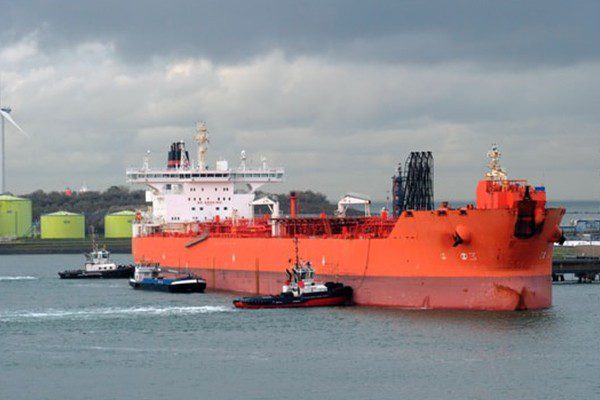Spot fixtures
The latest estimates show global spot fixtures increased in July to average 14.9 mb/d. Fixtures rose 1.7 mb/d, or almost 13% m-o-m. Compared with the previous year, spot fixtures increased 0.2 mb/d, or about 1%.
OPEC spot fixtures rose in July, averaging 10.9 mb/d. This represents an increase of 20%, or 1.8 mb/d. In comparison with the same month in 2021, they were about 0.5 mb/d, or 5%, higher. Middle East-to-East fixtures rose 1.6 mb/d, or 32%, to average 6.6 mb/d. Compared with the same month last year, eastward flows were 0.4 mb/d, or 7%, higher. Spot fixtures from the Middle East-to-West increased in July by around 0.7 mb/d, or 51%, over the previous month, to average 2.2 mb/d. Y-o-y, rates were 1.3 mb/d, or about two-and-a-half times higher. In contrast, outside the Middle East, fixtures declined in July to average 2.2 mb/d. This represents declines of 18%, or 0.5 mb/d, m-o-m and 1.2 mb/d, or 35%, y-o-y.
Sailings and arrivals
OPEC sailings jumped m-o-m by 2.7 mb/d, or over 12%, in July to average 24.9 mb/d, and were 4.1 mb/d, or about 20%, higher compared with the same month a year ago. Middle East sailings increased by about 2.2 mb/d in July to average 19.3 mb/d. Y-o-y, sailings from the region rose by 3.6 mb/d, or around 23%, compared with July 2021.
Crude arrivals in July saw m-o-m declines across all regions except Europe. West Asia led losses, falling by 0.4 mb/d, or over 5%, to average 7.8 mb/d. Y-o-y, arrivals in the region were 1.3 mb/d, or about 20%, higher. Arrivals in the Far East were marginally lower m-o-m at 13.9 mb/d, while y-o-y, they were 0.4 mb/d, or 3%, higher. In North America, arrivals were negligibly lower m-o-m, averaging 9.0 mb/d, but saw a y-o-y gain of 0.3 mb/d, or about 4%. Europe was the only region showing gains, with arrivals increasing by 140 tb/d, or 1%, to average 13.9 mb/d. This was 1.2 mb/d, or about 10%, higher than in the same month last year.
Dirty tanker freight rates
Very large crude carriers (VLCCs)
VLCC spot rates increased for the second-consecutive month in July, rising 28% on average m-o-m. The sector saw support from the wide /WTI spread, which made US crude flows to Asia more competitive. Easing bunker prices also improved earnings. Y-o-y, VLCC rates were up 76% on average. On the Middle East-to-East route, rates gained 26% m-o-m to average WS58 points and were 87% higher y-o-y. Rates on the Middle East-to-West route rose 30% m-o-m to average WS35 points. Y-o-y, rates on the route increased 59%. West Africa-to-East spot rates gained 25% m-o-m to average WS60 points in July. Compared with the same month last year, rates were 76% higher.
Suezmax
Suezmax rates in July fully recovered from the sharp drop earlier in May, increasing 23% m-o-m. Rates were supported by ongoing trade dislocations, which boosted demand for longer-haul voyages. These include higher Russian flows to Asia and increased European imports from the Middle East and the Americas. Rates were almost three times higher than in the same month last year. Rates on the West Africa-to-US Gulf Coast (USGC) route increased by 22% m-o-m in July to average WS124 points. Compared with the same month last year, rates were 170% higher. Spot freight rates on the USGC-to-Europe route rose 23% over the previous month to average WS112 points. Y-o-y, rates were 203% higher.
Aframax
Aframax spot freight rates also recovered from earlier losses, lifted by strength in the Atlantic Basin and Mediterranean. On average, spot Aframax rates rose 27% m-o-m. Compared with the same month last year, rates were 161% higher. Rates on the Indonesia-to-East route edged up 6% m-o-m to average WS183 points. Y-o-y, rates on the route were up 126%.
Spot rates on the Caribbean-to-US East Coast (USEC) route increased 44% m-o-m to average WS248 points. Y-o-y, rates were 214% higher.
Cross-Med spot freight rates saw an increase in July, up 24% m-o-m, to average WS209 points. Y-o-y, rates were 135% higher. On the Mediterranean-to-NWE route, rates rose 38% m-o-m to average WS218 points. Compared with the same month last year, rates were around 176% higher.
Clean tanker freight rates
Clean spot freight rates declined for the first time since roughly the start of this year, clipped by ample tonnage availability. On average, rates declined 23% m-o-m in July but were up 179% compared with the levels seen in the same month last year. Losses were seen on both sides of the Suez, but primarily in the Mediterranean.
Rates on the Middle East-to-East route declined 8% m-o-m in July to average WS285. Y-o-y, rates were up 239%. Freight rates on the Singapore-to-East route dropped by 4% m-o-m to average WS396 and were 277% higher compared with the same month last year. In the West of Suez market, rates on the Northwest Europe (NWE)-to-USEC route decreased 14% m-o-m to average WS309 points. They were 164% higher y-o-y. Rates in the Cross-Med and Med-to-NWE saw declines of around 40% each to average WS275 and WS285 points, respectively. Compared with the same month last year, rates were 129% higher in the Cross-Med and up 119% on the Med-to-NWE route.






